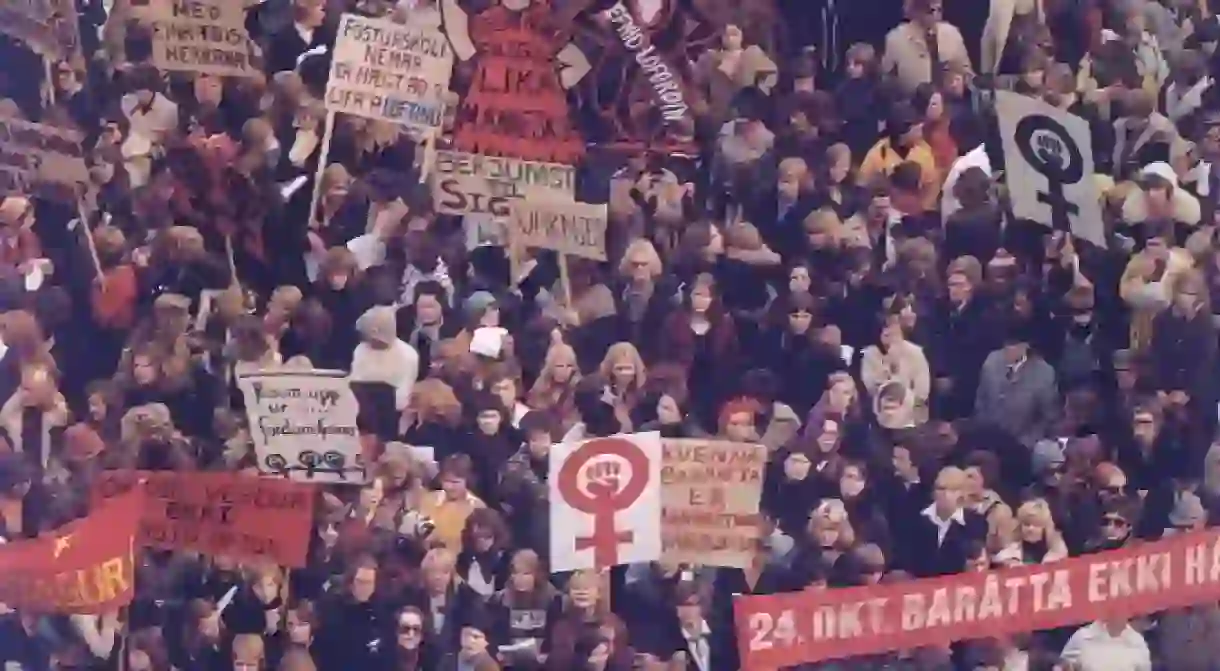The Defining Moments of the Most Feminist Country

While the popularity of recent female empowerment movements such as #FreeTheNipple and SlutWalk have been extremely popular in Iceland, the tiny island in the North Atlantic has actually had a long and surprisingly radical women’s rights agenda. Beginning in 1850, Iceland became the first country to grant unconditional equal inheritance rights to men and women. Not much time after that, women got the right to vote in 1915, five years before the United States.

The significant moment in the women’s rights movement in Iceland was in 1975, when, on October 24, practically every woman in the country protested for economic equality. Since women could be fired for going on strike, the organizers called it an organized “day off.” With approximately 90% of women taking part in the act, including both housewives and professionals, it was inclusive of women from all kinds of backgrounds who gathered in Reykjavík that day. At the time, it was 10% of the whole nation, which obviously made a big impact, with men barely coping with their absence in the workplace and in child-rearing. A chord was struck and a year later, Parliament passed a law guaranteeing equal pay for women.
Five years after the demonstration, Iceland elected Vigdís Finnbogadóttir as president, Iceland’s and Europe’s first democratically elected female president. Finnbogadóttir was at the time a divorced single mother with a career spanning work as a tour-guide, a television presenter, and in the theater. She was very popular, being elected three more times until she retired in 1996—serving as president for 16 years.
In 2009, Iceland elected the world’s first openly gay head of state as well as their first female Prime Minister, Jóhanna Sigurðardóttir. She also had an eclectic career path spanning work as a flight attendant and union official before entering politics. While already in a civil partnership with her wife, the two were married in 2010 when Sigurðardóttir helped to push marriage equality in Parliament.
Iceland also passed a law giving equal parental leave in 2000, allowing three months for each parent with an additional three months to split between them. In 2012, the law was amended to allow five months between each parent with an additional two months to split between them. The Icelandic government also pays 95% of kindergarten tuition, meaning state-run child care makes it much easier for women to work.
Most recently, campaigns such as #FreeTheNipple have been embraced by the country. The campaign began when a young Icelandic woman received backlash on social media for posting a picture of her bare breasts in response to a male friend who had done the same. Both men and women took to twitter to defend her, posting topless pictures in solidarity as well as organizing topless marches in public streets. While the movement to desexualize breasts for the cause of gender equality did not begin in Iceland, it was definitely embraced in Iceland.
Another campaign that began abroad that has been embraced and taken to new levels in Iceland is the Slutwalk, or druslaganga, in Icelandic. Thousands have marched in recent years in solidarity against the notion of slut-shaming, which puts the blame for sexual assault on the woman and especially the way in which she dresses.
Clearly, the last 150 years of women’s rights campaigns have been a part of Icelandic consciousness as the nation continues to be ranked the best place to be a woman.













